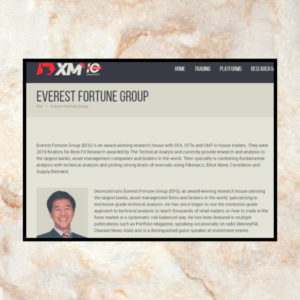- Forex History
- Market Structure
- Market Participants
- Forex Pairs
Forex History

- In 1944 in Bretton Woods, USA, 44 nations created a new international monetary system “The Bretton Woods system”
- They decided to tie their currencies to the United States dollar convertible into gold at $35 per ounce
- Central banks would buy and sell their currency in order to stabilize it within 1% of the pegged level to gold or to the dollar
- In 1971, the United States abandoned the fixed value of the dollar and allowed it to “float” in other words fluctuate against other currencies
- By 1973, all the nations participating in the Bretton Woods system agreed to allow the exchange rates to float
- Today most currencies are freely floating and their price is determined based on the demand and supply of each currency
The Forex Market

- The “place” where currencies are traded or exchanged for one another
- It is the world’s largest financial market
Market Daily Turnover

- Year 1998 – Daily turnover of $1.7 trillion
- Year 2005 – Daily turnover of $2.2 trillion
- Year 2007 – Daily turnover of $3.5 trillion
- Year 2011 – Daily turnover of $4.0 trillion
- Year 2015 – Daily turnover of $5.0 trillion
Market Geographical Distribution

- London – 37% of daily turnover
- Singapore, Hong Kong and Tokyo – 22% of daily turnover
- New York – 19% of daily turnover
- Europe – 8% of daily turnover
- Switzerland & Australia – 2% of daily turnover each
Market Operation Cycle

- The foreign exchange market is a global market
- It has no physical location
- Operates 24 hours a day, five days a week
- Monday to Friday all over the globe
Market Structure

- Interbank Market
- Forex Brokers
- Forex Traders
Market Participants

Central banks and (federal) governments
Commercial banks and financial institutions
International and commercial companies
Speculators and individual traders
Currency Pairs

The forex market works in pairs
To buy a currency you sell its equivalent in another currency
The first currency in the pair is called the “base” currency
The second currency in the pair is called the “quote” currency

Let’s say, that the market price in EURUSD is 1.1300
To buy 1 euro (base currency)
You must give 1.13 US dollars (quote currency)
In other words you pay 1.13 dollar for every 1 euro you get
Pairs – Majors


Majors – Features

Very liquid
Not volatile
Hard to manipulate
Tight spreads
Pairs – Crosses


Crosses – Features

Less liquid than majors
More volatile
Easier to manipulate
Wider spreads
Pairs – Exotics


Exotics – Features

Very illiquid
Very volatile
Very easy to manipulate
Huge spreads
- What is a Pip
- What is Spread
- What is a Lot
- Calculate Profit and Loss
- Types of Orders
What is a Pip or Tick ?

- A pip or point in price is the smallest price change any given exchange rate can make
- For other instruments like indices and shares the minimum price movement is called a tick
- For currencies it is usually the 4th decimal point
What is a Pip ?

- US Dollar pairs and others currency pairs are quoted in 4 or 5 decimal points
- Japanese Yen pairs are quoted in 2 or 3 decimal points
What is the Spread ?

Instruments are quoted in Bid and Ask prices
Bid is the price to sell the instrument
Ask is the price to buy the instrument
The difference between these prices is the spread
The spread varies from one instrument to another
What is a Lot ?

- On the MT4 and MT5 trading platforms, instruments are always traded in specific amounts called lots
- In forex, one standard lot is 100,000 units of the base currency and one micro lot is 1,000 units
- In commodities, stocks, and other instruments a lot represents the number of units of that instrument
Calculating Profit & Loss - Forex

- Profit & Loss = Amount traded x Pips
- If you buy 1 standard lot of EURUSD at 1.1358 and then sell it at 1.1373
- By multiplying this number by the lot size, you will get your profit in the quote currency

- When the USD is the base currency your profit or loss will be floating
- If you buy 1 standard lot of USDJPY at 110.50 and then sell it at 110.90
- By multiplying this number by the lot size you will get your profit in the quote currency
- To convert the Yen to Dollar, you divide the profit by the closing rate of the trade
Calculating Profit & Loss - Commodities

- Profit & Loss = Amount traded x Dollars
- If you buy 1 standard lot of Gold at 1205 and sell it at 1200
- The profit or loss is calculated by multiplying the dollars gained or lost by the amount traded
Calculating Profit & Loss - Shares

- Profit & Loss = Amount traded x Dollars
- If you buy 15 Lots of Facebook CFDs at the price of 177$ and sell them back at 178.1$
- The profit or loss is calculated by multiplying the dollars gained or lost by the amount traded
Calculating Profit & Loss - Indices

- Profit & Loss = Amount traded x Points
- If you buy 100 Lots of US-500 index at the price of 2644 and sell them at 2660
- The profit or loss is calculated by multiplying the points gained or lost by the amount traded
Trading Orders – Market

- The most basic and common type of order
- It executes the trade at the best available price
- Used to enter a new position or exit an existing one
- BID price is the best available price to sell at
- ASK price is the best available price to buy at
Trading Orders – Sell Limit & Sell Stop

- In addition to market orders, traders can place pending orders
- Pending orders are orders that will be executed when the price reaches a pre-determined level
- They are categorized into limit orders and stop orders
- A sell limit order is used to sell higher than the current market price
- Sell stop order is used to sell lower than the current market price
Trading Orders – Buy Limit & Buy Stop

- Buy limit order is used to buy lower than the current market price
- Buy stop order used to buy higher than the current market price
Trading Orders – Trailing Stop

- A stop order set at a predefined number of pips away from the market price
- Automatically trails position as the market moves in your favor
- Correction by the predefined number of pips will trigger the order and close the position
- Cash Accounts
- Margin Accounts
- Leverage
- Margin
- Margin Call
Cash vs Margin Account ?

- In a cash account, buying power is equal to capital invested
- With a $10,000 deposit one can buy shares or currencies up to $10,000 and not more
- In a margin account, traders can take advantage of leverage to trade bigger positions than the value of their deposit
- With a $10,000 deposit one can buy shares or currencies equivalent to $100,000 or more
What is Leverage ?

- Leverage is a loan that is provided by the broker to the investor
- 2:1 3:1 10:1 20:1 50:1 100:1 200:1 up to 500:1
- If you deposit $10,000 in your trading account and choose to trade with a leverage of 100:1
- You can trade up to 100 times $10,000 which equals to 1,000,000 US Dollars
- In other words the leverage provides the means to an investor to have increased trading capital
Maximized Profits or Losses


What is Margin ?

- A collateral in the form of margin is required by the broker to ensure that all losses are covered
- The required margin for the open position is 1 divided by the leverage
- Margin is the value of open positions times the margin percentage
- Margin is directly linked to the leverage level of the account
Free Margin and Margin Level


Margin Call and Stop-Out

- When your margin level reaches 100% you don’t have any free margin to open any new position
- “Margin Call” at 50% margin level
- “Stop-Out” at 20% margin level
- This way both the broker and the investor will be protected and prevent losing more money than initially deposited








